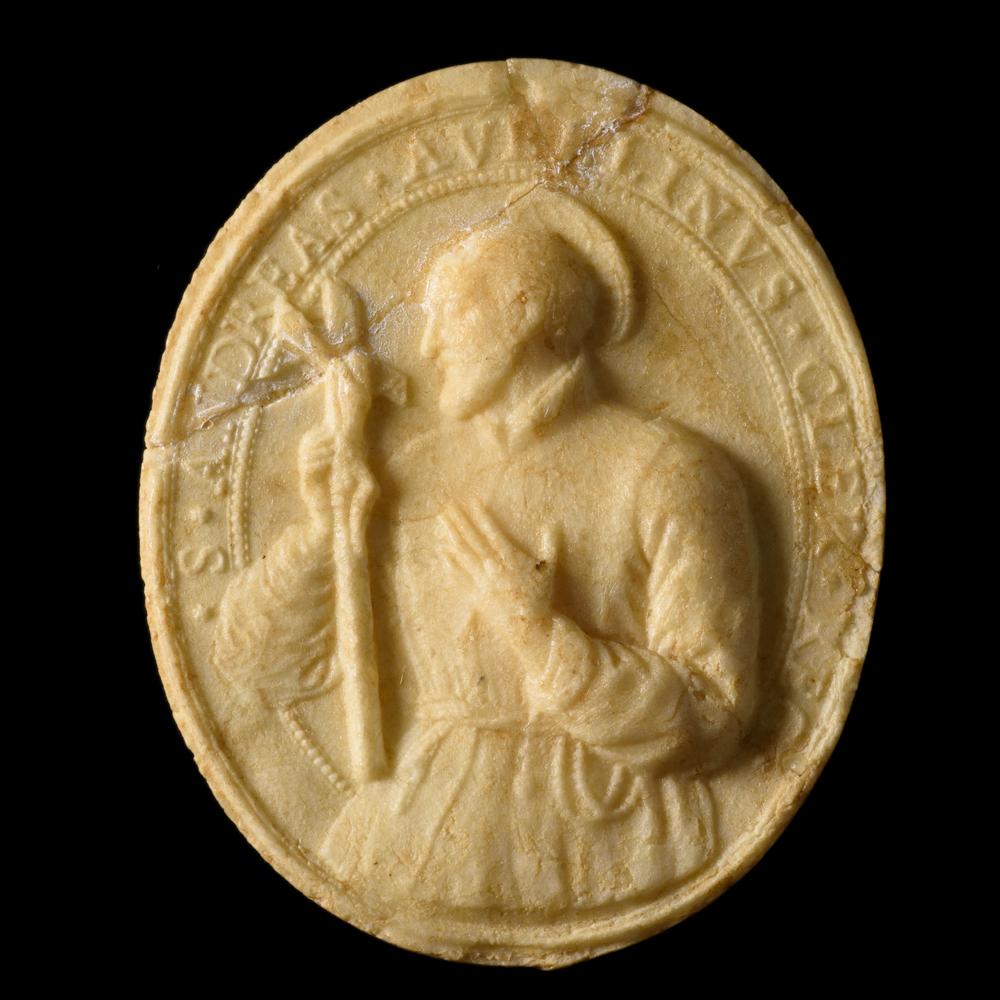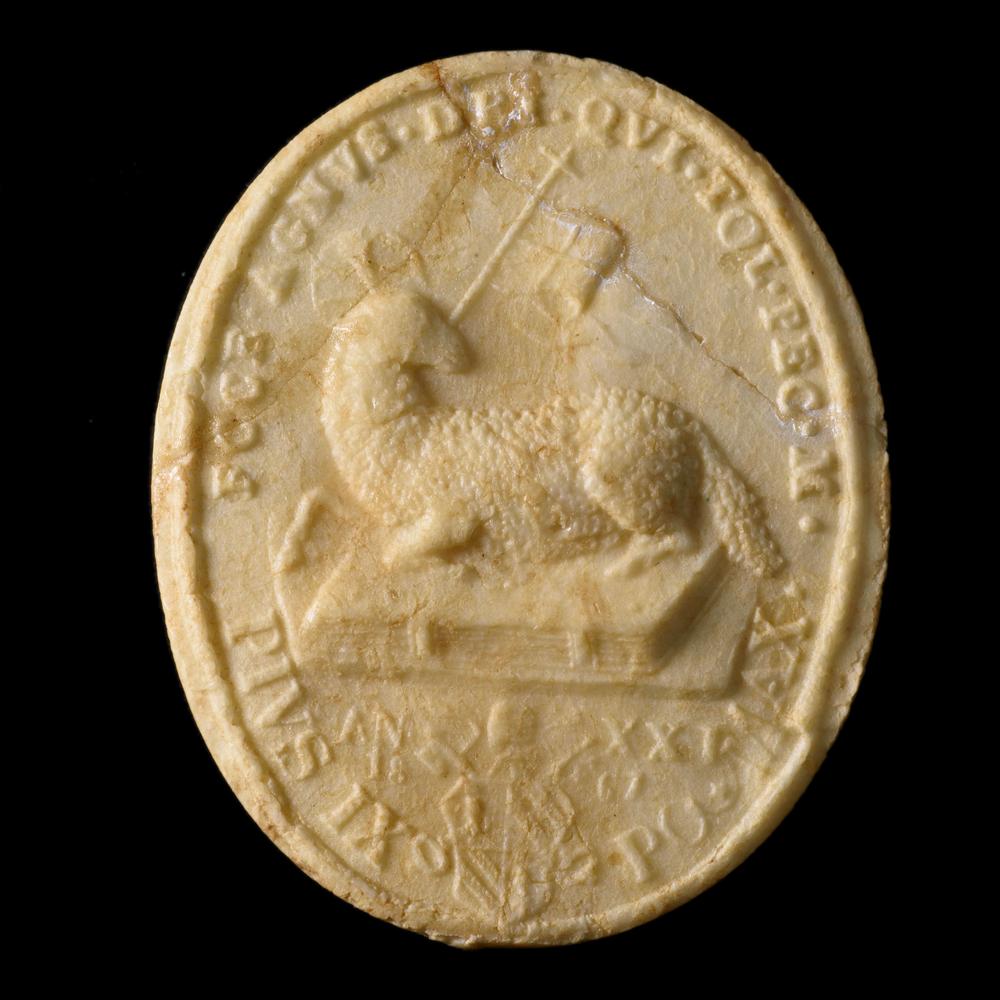AGNUS DEI 1867
AGNUS DEI 1867
Our prices are in euros, the prices converted in dollars or other currencies can vary according to the rate.
Free Worldwide Shipping – Secure and Protected Delivery
ref: #RK00-744Couldn't load pickup availability
Rare wax medallion, called Agnus Dei, featuring two finely molded sides. On the first side, we recognize the figure of Saint Andrew Avellino, identifiable by the Latin inscription around him: S. ANDREAS AVELLINUS C.R., meaning “Saint Andrew Avellino, Cleric Regular.” The saint is shown in bust form, facing left, a halo around his head, dressed in the habit of the Theatines. He holds a crosier in his left hand, symbolizing his spiritual authority, while his right hand rests on his chest in a gesture of humility or prayer.
The second side shows the Agnus Dei, the Paschal Lamb, symbol of Christ. The lamb rests on a book with seven seals, holding the triumphant cross with a banner. This scene is framed by the inscription: ECCE AGNUS DEI, ECCE QUI TOLLIT PECCATA MUNDI — “Behold the Lamb of God, behold Him who takes away the sin of the world,” a quote from the Gospel according to Saint John. At the bottom of the composition, a reference to Pope Pius IX appears: PIUS IX PONT. MAX., accompanied by the year 1867, corresponding to the 22nd year of his pontificate (ANN. XXII). The papal coat of arms is also visible at the bottom of the medallion.
These medallions were blessed in Rome during Easter Week and then distributed to the faithful, often as a token of thanksgiving or protection. According to tradition, the wax used came from the Paschal candle of the major basilicas of Rome, mixed with holy chrism. The medallion could be worn, inserted into religious objects, or kept as a domestic relic.
One restoration to report.
PERIOD: 1867
DIMENSIONS: 8.5 cm
SIZE: 3.35"
The Agnus Dei wax medallions are devotional objects solemnly blessed by the pope. Made from white wax, often from the remnants of the Paschal candle and mixed with holy chrism, they symbolize the purity and light of the risen Christ. The obverse shows the Lamb of God (Agnus Dei) resting on a book and holding the banner of the Resurrection, surrounded by the Latin inscription “Ecce Agnus Dei, ecce qui tollit peccata mundi” (“Behold the Lamb of God, behold Him who takes away the sin of the world”). The reverse generally depicts the image of a saint, often one recently canonized at the time the medallion was made. These medallions were blessed by the pope during specific ceremonies, notably on Easter Wednesday, and distributed to the faithful as sacramentals—objects meant to strengthen faith and offer spiritual protection. The tradition of their manufacture dates back at least to the 9th century, though their exact origin is uncertain. The production of Agnus Dei medallions ceased in the 1960s, but they remain precious witnesses of popular devotion and the liturgical history of the Catholic Church.





